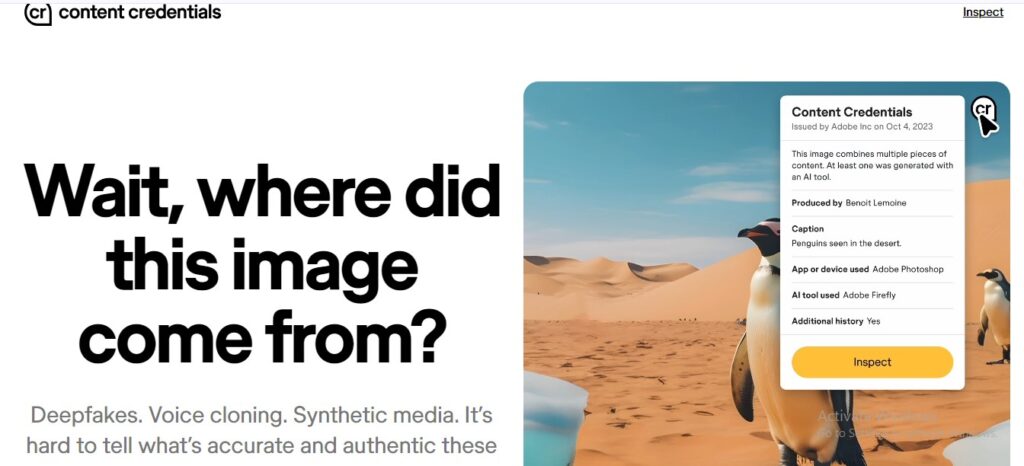Content Credentials: Verify the Authenticity of Online Content
Content Credentials is an open-source technology that provides transparency and authenticity to digital content.
Description
Content Credentials is an open-source technology that provides transparency and authenticity to digital content. By embedding verifiable information about the origin and history of a piece of content, Content Credentials aim to combat misinformation and build trust in online media. This technology allows creators to attach details about how their content was made, edited, and attributed, giving viewers a deeper understanding of its origins.
Content Credentials are designed to be easily accessible and understandable. With a simple click, viewers can uncover crucial information about the content they encounter online, fostering a more informed and responsible digital environment.
How Content Credentials Work:
- Capture: Content Credentials are attached whenever content is created, captured, or edited.
- Attach: Creators can choose to attach Content Credentials to their work, providing details like authorship, creation date, and any AI involvement.
- View: Anyone can view the Content Credentials by clicking a designated icon, revealing key information directly in context.
- Verify: A "Verify" feature allows users to explore the full edit history and detailed information about the content's origins.
Key Features and Functionalities:
- Transparency: Reveals hidden information about content creation and modification.
- Authenticity: Provides verifiable details about authorship and origin.
- Edit History: Captures a detailed history of changes made to the content over time.
- AI Disclosure: Indicates whether AI tools were used in the content creation process.
- Open Standard: Based on an open-source technology, promoting wider adoption and interoperability.
Use Cases and Examples:
Use Cases:
- Verifying the authenticity of news articles and combating misinformation.
- Providing transparency about AI-generated content.
- Tracking the provenance of digital art and photography.
- Protecting intellectual property and ensuring proper attribution.
- Building trust and accountability in online media.
Examples:
- A news organization uses Content Credentials to verify the origin and authenticity of their articles.
- An artist uses Content Credentials to provide details about the creation process of their digital artwork.
User Experience:
While Content Credentials focuses on verifying the origin and authenticity of digital content, its design and features suggest a user experience that prioritizes:
- Trust: Provides a reliable way to verify the source and history of digital content, combating misinformation and promoting transparency.
- Security: Protects creators and consumers by establishing a secure chain of custody for digital assets.
- Interoperability: Promotes open standards and collaboration across platforms and applications, fostering a more trustworthy digital ecosystem.
Pricing and Plans:
Content Credentials is an open-source technology and is free to use.
Competitors:
- Provenance: A platform for tracking the history and ownership of digital assets.
- Truepic: A technology for verifying the authenticity of photos and videos.
- Adobe Content Authenticity Initiative: An initiative focused on developing content authentication solutions.
Unique Selling Points:
- Provides a standardized and open approach to content authentication.
- Offers detailed information about content creation and modification history.
- Empowers users to make informed decisions about the content they consume.
Last Words: Join the movement for a more transparent and trustworthy internet. Explore Content Credentials at contentcredentials.org and learn how to verify the authenticity of online content.
